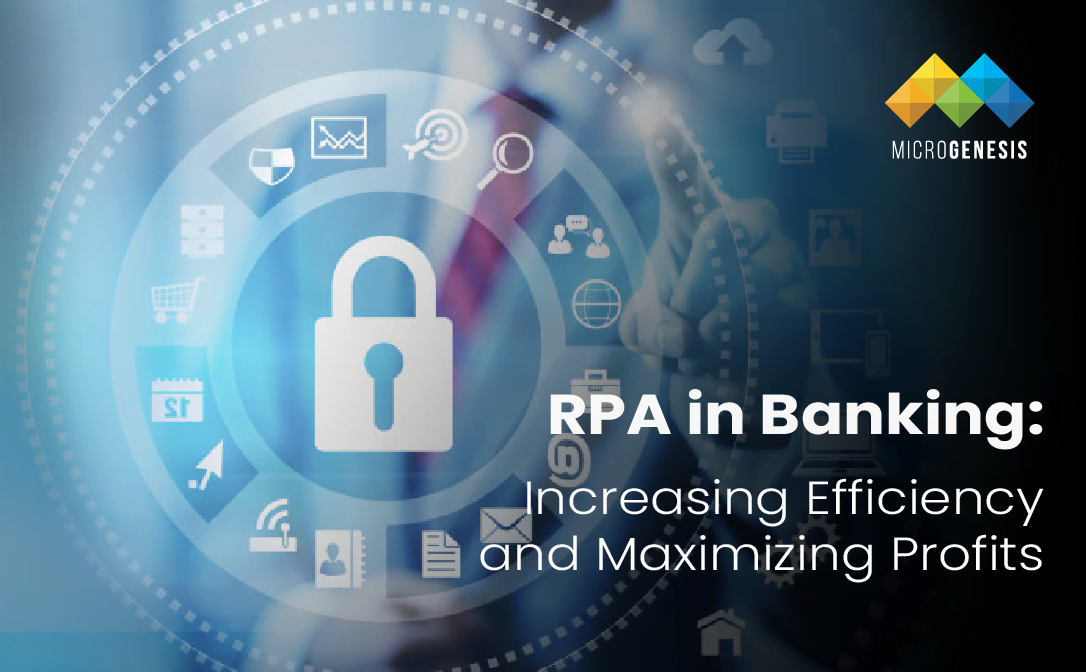Over the years, technological advancements have led to exponential growth in the banking industry. As a result, the banking sector has become faster, more secure and reliable. To stay ahead in the competition especially with the digital disruption and new entrants coming up with new technology, it has become mission-critical for the existing players to drop the traditional banking practices and adopt new measures. Although most players are adapting to the changing practices, many are skeptical about spending too much on resources for the daily tasks. RPA (Robotic Process Automation) has proved critical in enhancing efficiency and ROI while maintaining security, allowing institutions to maintain a competitive edge.
What is RPA (Robotic Process Automation)?
RPA or Robotic Process Automation is a software technology that simplifies the creation, deployment and management of software robots that imitate human actions while interacting with digital customers and software. These software robots can understand human queries, recognize and perform predefined tasks faster and more consistently than human
How RPA can help the banking sector grow?
Increasing operational costs, combined with regulatory fines and stringent regulatory standards, slow down procedures and harm the customer experience. Adding more employees to the task of developing new and better ways to manage compliance while reducing operational cost is not the solution.
Banks can use Robotic Process Automation(RPA) to minimize human labour, improve compliance, limit risks, and improve the overall customer experience. Furthermore, it’s no additional infrastructure requirement makes automation an ideal choice for banks.
Are you curious to know how? Continue reading
Implementation of RPA helps banks increase team’s productivity by leveraging the benefits of robots to streamline mundane tasks. Setting up RPA in the system is complex that requires training, inputs and governance. Once set up and implemented these RPA-based banking robots can take complete onus of the system and ensure the work assigned is performed diligently.
RPA use cases in banking
RPA can be used to automate a wide range of business processes. So, we’ve compiled a list of RPA use cases and application areas in the banking industry.

- Loan processing– Loan processing involves extracting data and inputs from multiple systems, but with RPA it can be brought down to 10 to 15 minute’s processes.
- Know your customer – As compared to the traditional process, automation of the KYC process saves both time and cost.
- Fund transfer –The manual process of fund transfer takes around 10 minutes per request whereas if automated the turnaround time per request can be reduced to few seconds.
- Audits: Year-end audit reports take several man-hours to complete and still there are chances of human error but with the implementation of bots the task can be performed within minutes without error.
- Anti-money laundering (AML): RPA has proven to be effective in saving time and money when compared to traditional banking practices, whether it is recognizing risks or discovering questionable banking transactions.
RPA advantage in banking
By offering speed, agility, quality and value to the customers Robotic Process Automation enables the banking sector to stand out in the mundane banking tasks. Further, here are some of the other benefits that RPA offers to the banking sector.

- Reduces the number of repetitive jobs: Many tasks within the banking institutions are often repetitive. These tasks usually involve endless man-hours that can be accomplished by automating the process. Implementing RPA relieves employees from this monotonous work so they can invest their time and energy working on more important responsibilities.
- Improves accuracy: It’s the human tendency to commit mistakes at some point in time. However, with the implementation of RPA, the chances of error are significantly reduced as its programmed in a way to follow rules. Thus, man-made errors are eliminated.
- No infrastructure cost: Due to its UI automation capabilities, implementation of RPA doesn’t require any significant changes to the existing infrastructure. In the case of cloud-based RPA, the hardware and maintenance cost are further reduced.
- Cost-saving: Most people believe that RPA adds to the overall operational cost of banks. Whereas, that’s not true. Implementing RPA significantly reduces cost and improves the operational efficiency of the banking institutions.
- Promotes adaptable business: With the rapidly growing technology and globalization, banks need to be more prepared and adaptable than ever. With the adoption of RPA, banks can be prepared for any situation and respond instantly. Also, relieving employees from a mundane task allows them to consider innovative measures to grow the business.
- Reporting on risk and compliance: By using an intelligent technology like RPA bank can rapidly reduce compliance backlogs and eliminate wasted efforts by making the banking processes more intelligent and rational.
Final Thoughts
With so many advantages, the adoption of RPA should be the priority of the banks. RPA can transform the banking sector for good by automating repetitive tasks and improved efficiency.
As a reputed RPA consultant, we have worked with many businesses to implement a robust RPA strategy. We have both experience and expertise to provide pragmatic RPA solutions and support to our clients. Working on leading RPA tools and platforms to implement a seamless process to deliver high performance is our forte. As a part of an enterprise solution, we also offer logical and structured RPA solutions to our clients with an approach to automate their business process.
Interested in learning more about our RPA services? Know here:




